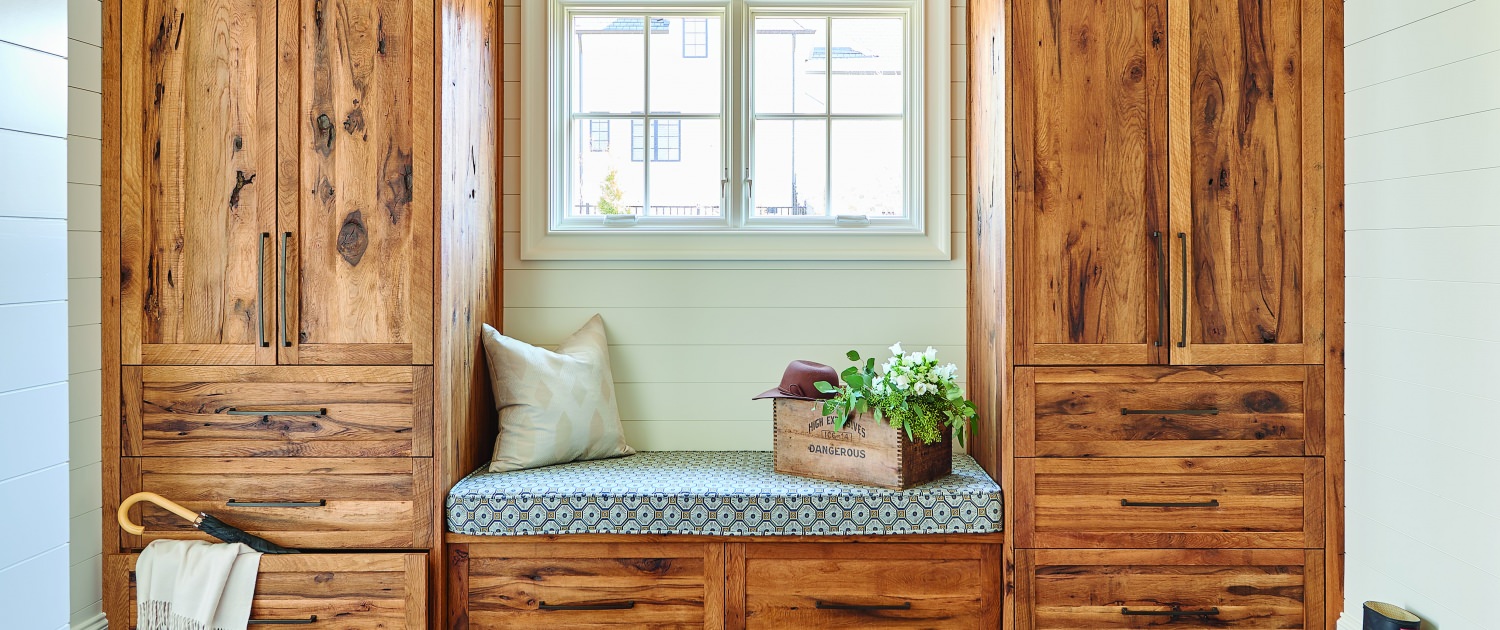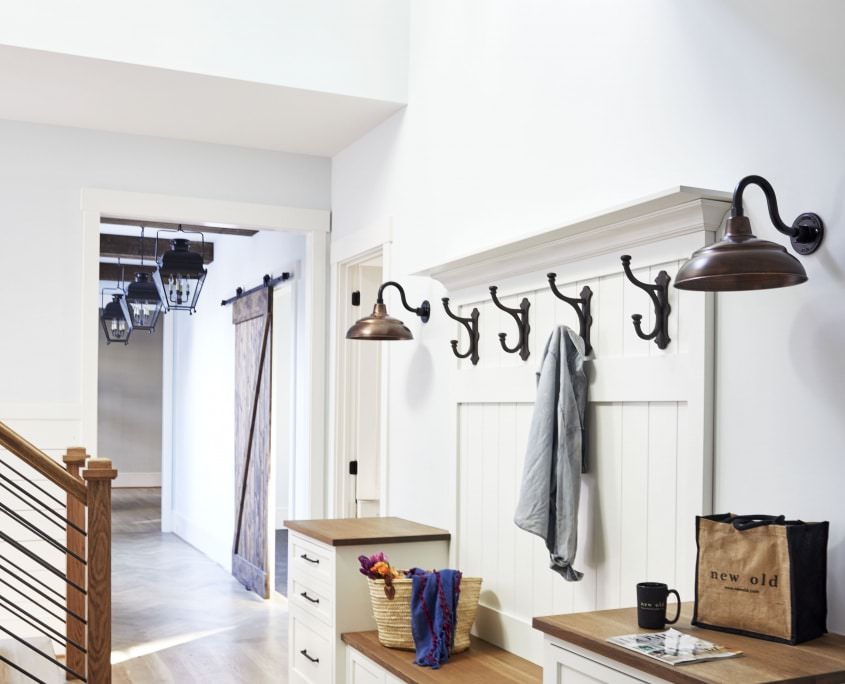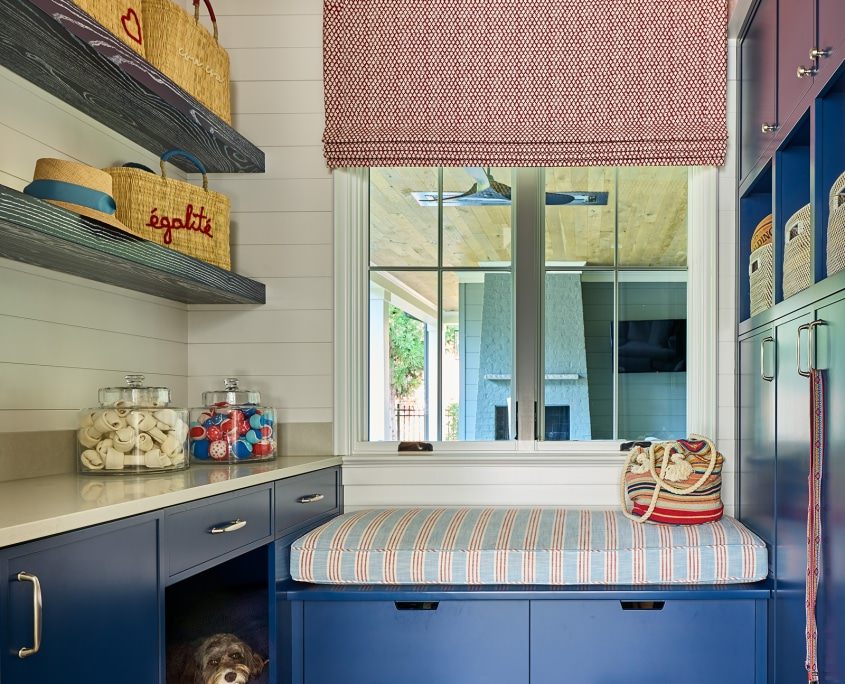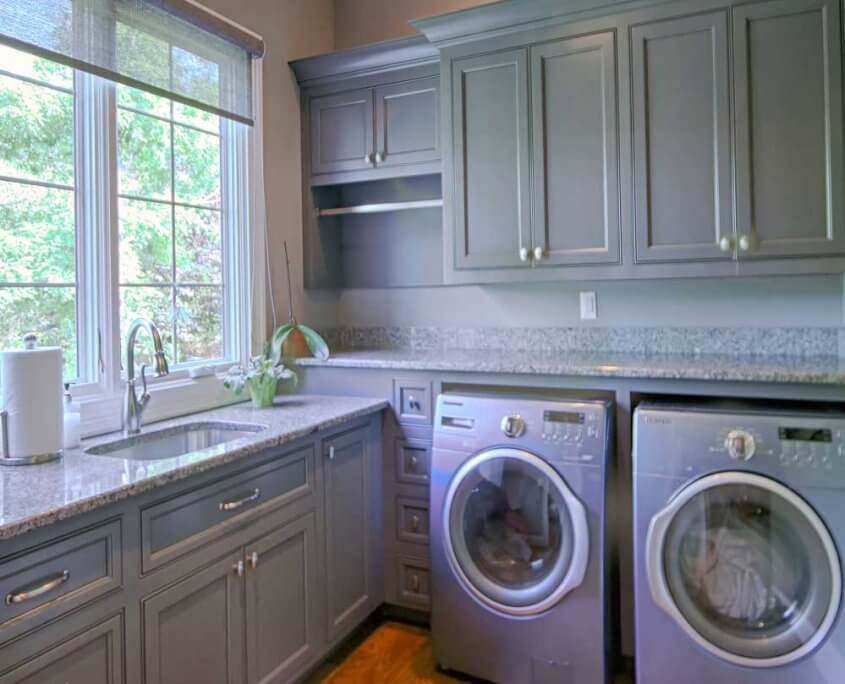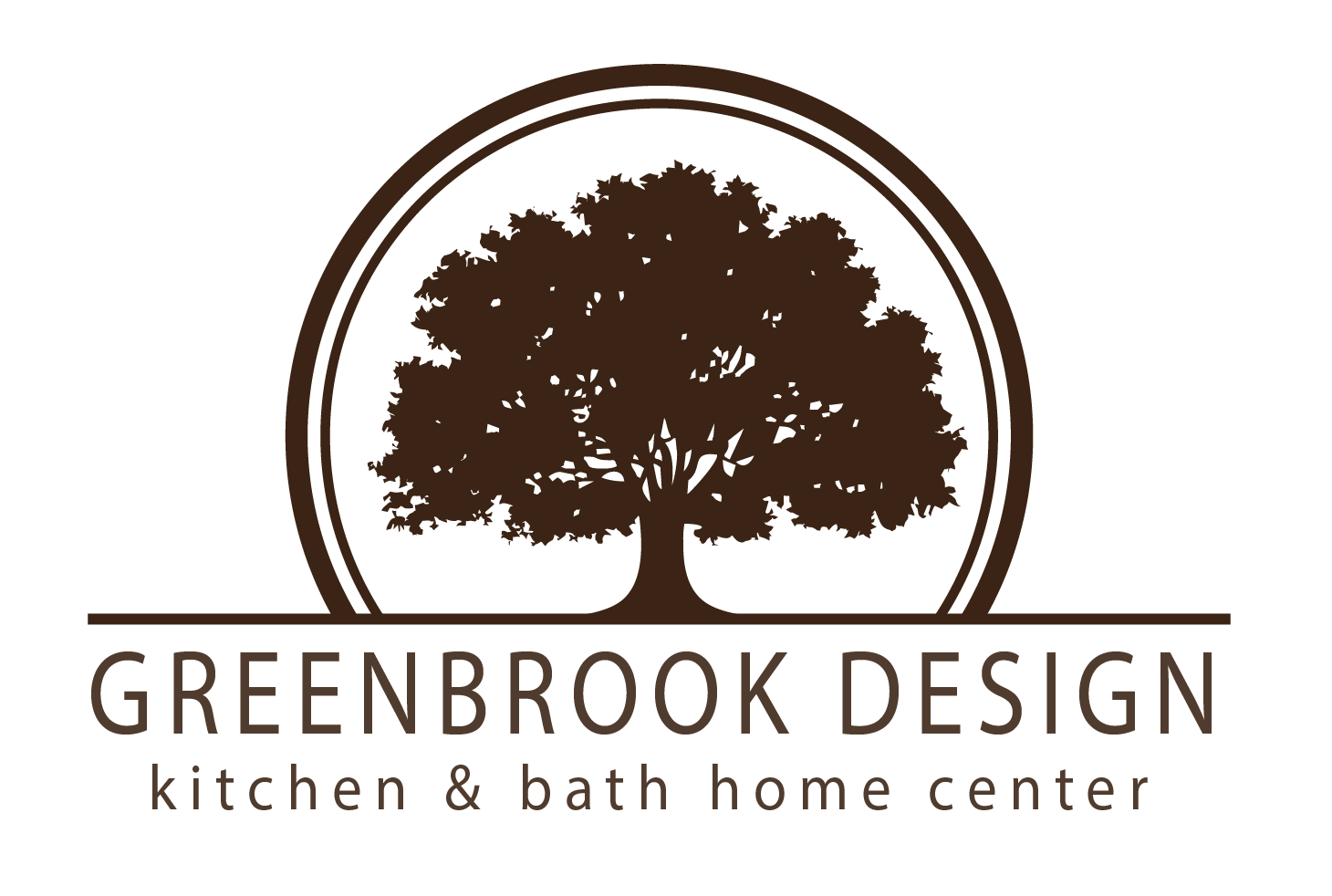 Post by Stacey Walker. Stacey mostly works behind the scenes for Walker Woodworking, managing day to day operations, and marketing. Stacey has helped many clients create their dream space.
Post by Stacey Walker. Stacey mostly works behind the scenes for Walker Woodworking, managing day to day operations, and marketing. Stacey has helped many clients create their dream space.
Mudroom Design Tips
A mudroom is a useful addition to the home since it stores everyday items like shoes and coats, but it may also serve other organizational purposes. Whether you are remodeling your current mudroom or adding one to your house, we have collected some of the more common questions and answered them in this blog.
Where are mudrooms located?
The purpose of the room frequently determines the location of any restoration or remodel. A mudroom is usually found near a door, such as in the foyer, laundry room, or even the garage. For families with school-aged children, it can be helpful to have the mudroom placed near an entry door as it offers out-of-sight storage for backpacks, shoes, and coats while still within easy reach. Areas like the garage let you shed soiled clothing or shoes before coming into the house. You can even opt to include a laundry hamper for easy collection. Pairing it with your laundry room works well if it is located near a garage or backdoor since you can also drop off dirty clothes right there or even wash up before going into areas like the kitchen or living room.
How to make a mudroom wall
Sometimes there is not enough space to dedicate an entire room, but even a wall can be transformed into a functional mudroom imitation. Hooks provide a place to hang clothing, backpacks, hats, and a briefcase. Installing a simple bench will let you sit down to put on or take off your shoes, plus you can place decorative bins or baskets underneath for added storage. Designing custom cabinets can also increase your storage options along the wall and be used for a number of purposes, including sports gear and seasonal clothing.
Mudroom design tips
When building the ideal mudroom, the two most important factors are layout and function. By asking questions, you can think about the goal you want to achieve in this area. What kinds of things will be stored here? Is it in the main traffic flow of the home, such as the entryway? Will both adults and children need to use it? This helps guide the design process and dictate what elements are essential. Lower options for storage and even seating may need to be included when creating a usable space for younger children versus adults. When a mudroom is located in a visible part of the home, it is ideal to build it with closed-off components like cabinet doors. Don’t forget about adequate lighting, especially if the mudroom shares a space with the laundry room.
How to design mudroom storage
The mudroom is ideal for storing kitchen waste, sports equipment, paper goods, and cleaning or pet supplies. Cabinets, shelves, decorative bins, and baskets can help you maximize storage space while also allowing you to organize stuff by category. Custom cabinets or built-ins are an efficient use of space since they are suited to your exact needs. They can also be made floor-to-ceiling, giving you full use of your wall space.
Best mudroom floor
Flooring is an essential and practical element to consider when planning your mudroom renovation or addition. This flooring needs to be durable because of the high traffic and easy to maintain since there will be a good amount of dirt and water dragged in from the outdoors. Darker colors and patterns are a good choice for your flooring since they hide dirt better than their lighter counterparts. Tile is a prime candidate for mudroom flooring, but it is a good idea to minimize the grout lines, perhaps with larger tiles, so there are fewer dirt traps. Some have even chosen to use natural tile and even recycle old bricks as a floor option, but again, keep in mind that the more texture you add the greater the chance for dirt to build up in the cracks.
Mudroom ideas for small spaces
Small spaces can be challenging, but not impossible. Take inventory of your usable space, and then contemplate the basics needed to accomplish the tasks in your mudroom. This does not mean you throw away your wishlist, but those items may need to be limited. As with all tight spaces, look for every square foot that can be turned into something, such as wall space, corners, and floor space. Painting the walls is a great way to add color without taking away from the size of the room. Include furniture pieces with a dual purpose, like a bench with storage inside. A good designer can help you make the most of your small mudroom area.
Mudroom ideas with laundry
Combining your functional mudroom with another important area in the house can result in a powerhouse. Because the laundry room frequently serves as more than simply a cleaning station, why not combine it with a mudroom? These widely used areas complement one other nicely and can be seamlessly built to create a lovely space. It is critical to keep certain elements separate in this hybrid space in order to streamline the operations. A nice arrangement option is to place them opposite each other, and another is to place them side by side along the wall. Cubbies and complete cabinets can also aid with this separation.
Mudroom ideas with lockers
Incorporating lockers into your mudroom is an ideal solution for homes with multiple children since it allows them to have a space all their own. They can store their outerwear, electronic devices, and backpacks in their locker and know exactly where they are for the next school day. This will also speed up the morning routine as it cuts down on lost or misplaced items. Taller cabinets work best for this design, with varying depth and width. Including a charging station in each lets everyone plug in their devices when they get home so that they are ready for the next day.
Mudroom design inspiration
Even though this is a functional component of the house, it does not have to be boring. Because it takes up no space, wallpaper is a fun and quick way to add a small splash of color or design. Pattern flooring offers a practical purpose while also adding a touch of style. You can also provide some contrast with the color of the countertop and cabinets. Some people like to utilize a wood top because it gives warmth and a bit of farmhouse to the environment. Hanging a decorative light fixture in your mudroom is a great way to add visual appeal or a couple! Places like Pinterest are ideal for gathering inspiration.
Mudroom vs dropzone
These two words share so many similarities that they are almost interchangeable. A mudroom is a dedicated space, usually near an entrance, for a variety of purposes and a drop zone is more honed in on the specific needs of the family, acting like the central hub.
Designing a mudroom
Adding or revamping this area of the home is a great way to gain some control over your entrance. Versatility is synonymous with the mudroom and allows you to have a go-to place for a myriad of tasks and storage needs. Talk to your designer about including one in your home.

